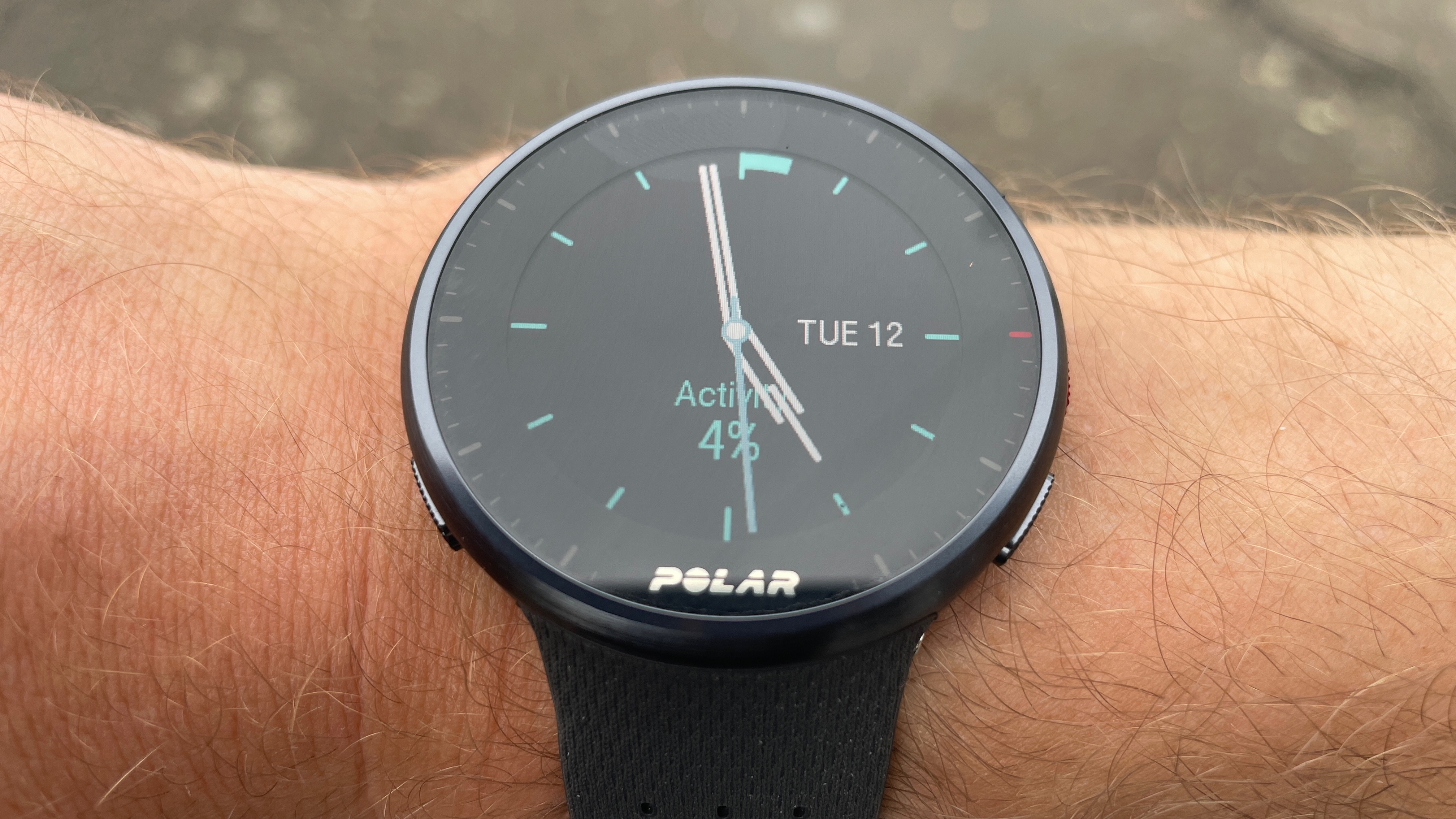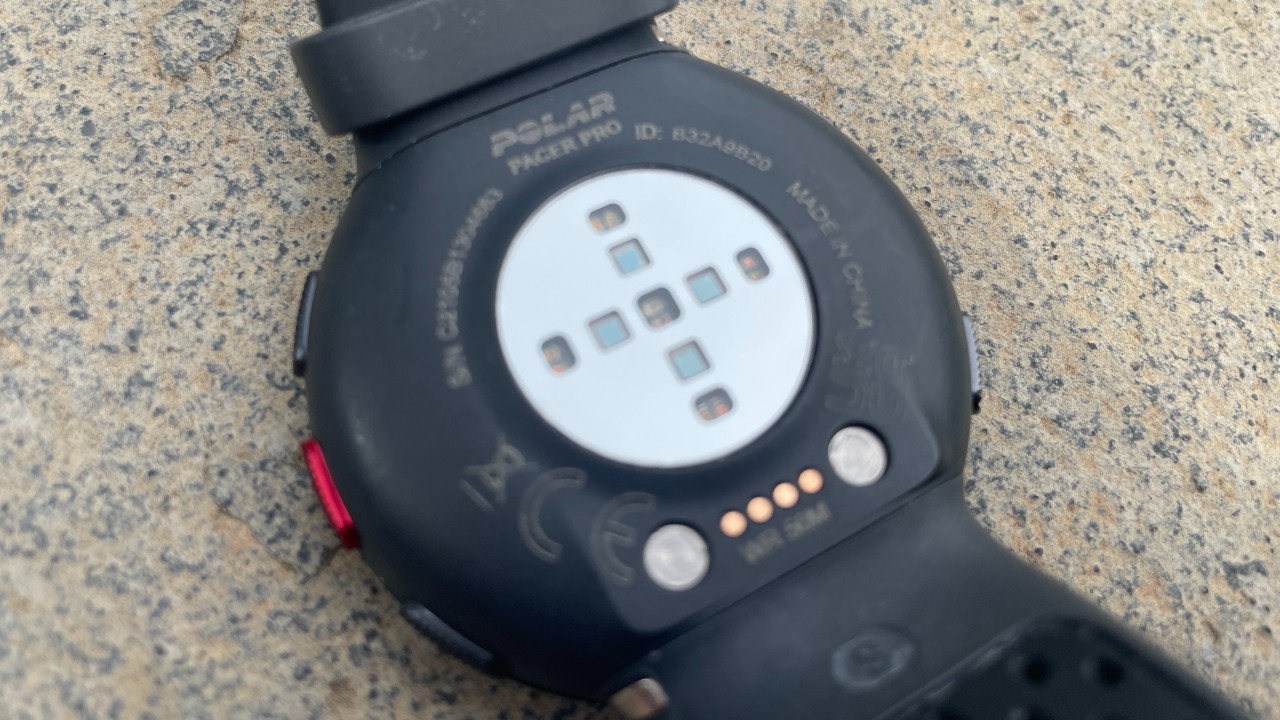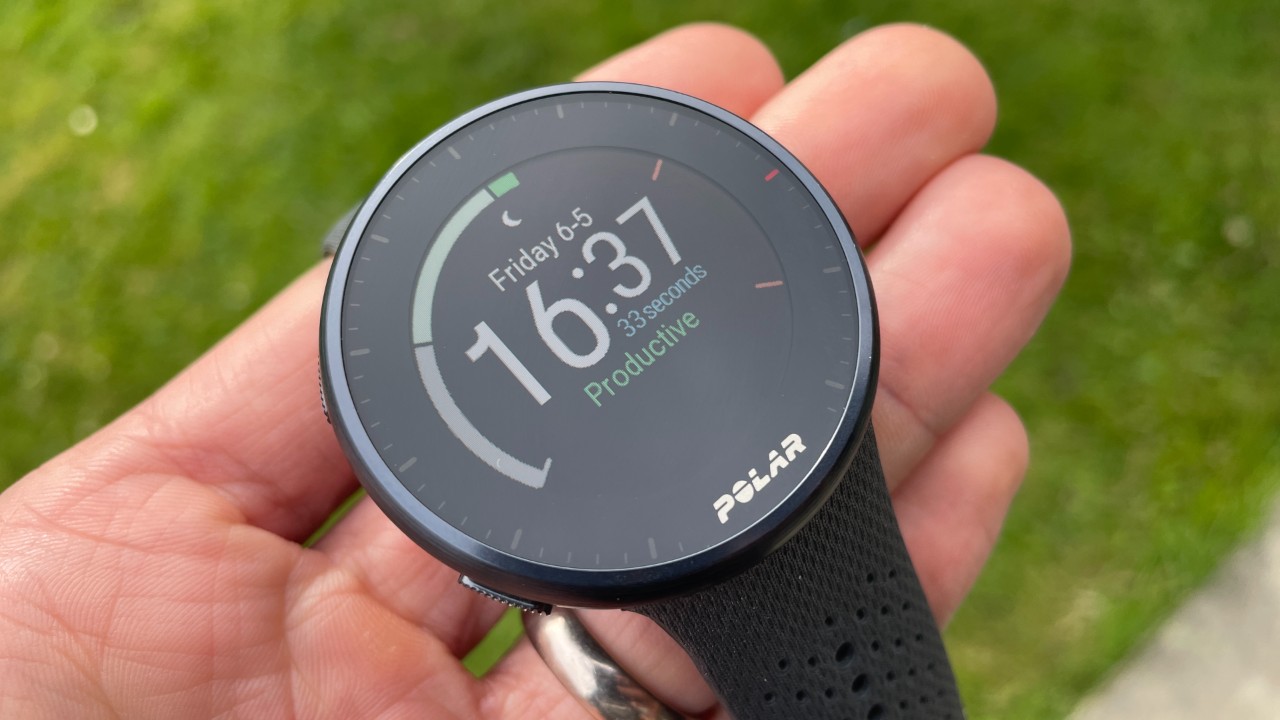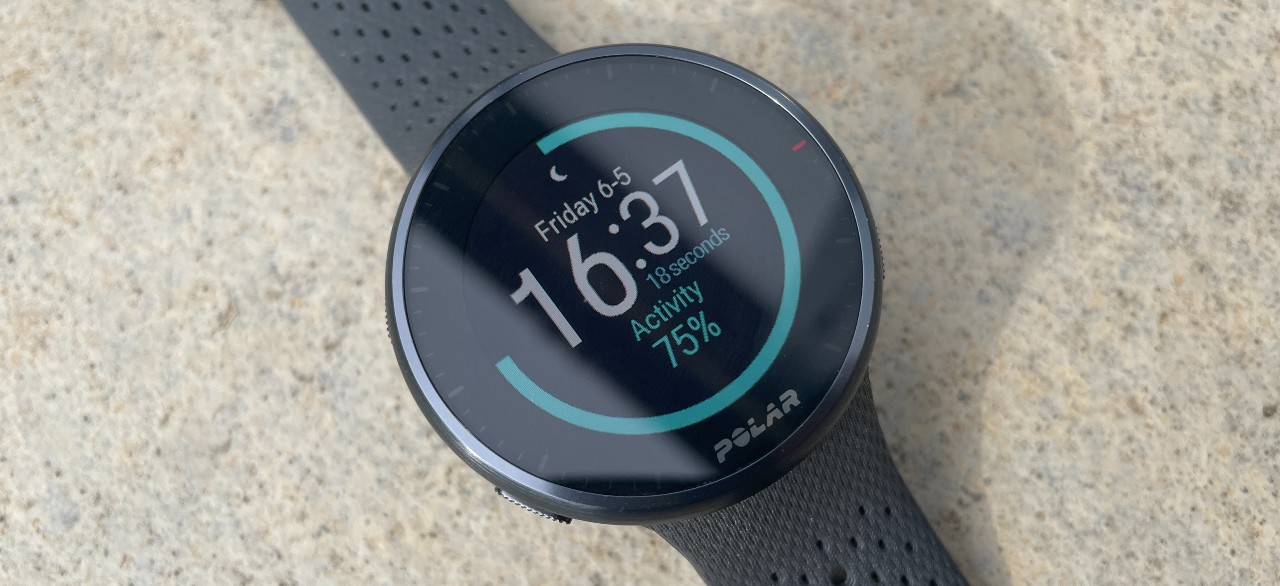Our Verdict
The Pacer Pro packs all of Polar’s best features into a lighter, cheaper device, and it’s a strong mid-range option for runners and triathletes. However, there’s nothing new here, and strong alternatives like the Garmin Forerunner 245 and Coros Pace 2 offer a better all-round package.
For
- Polar’s key features in a cheaper watch
- Lightweight
- Great training and sleep analysis
Against
- Looks dated
- Short battery life
You can trust Coach
When most watches launch there is great fanfare about the new features they have, but the most appealing aspect of the Pacer Pro is that it sticks to the Polar blueprint: it offers all the key features you’ll find on the top-of-the-range Vantage V2 and Grit X Pro, while reducing the size and price of the device.
Polar may have inadvertently reduced the appeal of its best running watches considerably as a result, but for consumers it’s great news. The Pacer Pro is a feature-packed multisport watch for £259 and provides competition to the likes of the Coros Pace 2 and Garmin Forerunner 245.
Polar Pacer Pro Review: Price And Availability
The Polar Pacer Pro launched on 13th April 2022 and is available for £259. On the same day Polar announced the cheaper Pacer watch, which costs £169.50 and starts shipping in May. The Pacer Pro comes in considerably cheaper than Polar’s top devices – the Grit X Pro and Vantage V2, which are £429 – and essentially kills off the Vantage M2 by offering more features and a better design for the same price.
Design

The Pacer Pro looks like a sleeker, lighter version of the Vantage V2. It weighs 41g with the wristband and sits snugly and comfortably against the wrist. It has a MIP (memory-in-pixel) reflective colour display, which is brighter than the screens on other Polar sports watches, though still looks dull in comparison with an AMOLED display.
However, it is the thick black ring that runs around the outside of the screen that is the bigger problem, in that it makes the Pacer Pro look outdated. It’s not a device that’s a pleasure to interact with throughout the day, with limited customisation options and an uninspiring look. The Pacer Pro has an aluminium bezel, the chief design upgrade on the all-plastic Pacer.
The Pacer Pro doesn’t have a touchscreen like Polar’s pricier watches, though this is not a big loss given that I’ve always found Polar’s touchscreens to be laggy. The Pacer Pro has five buttons that you use to easily navigate its menus, while a faster processor means there is little to no lag when moving through them.
Polar says it has changed the antenna design on the Pacer Pro to improve GPS accuracy, and the watch can call on two satellite systems at once, though it doesn’t offer all the satellite-system tracking or dual-band GPS that you get on Garmin and Coros’s top watches.
Sign up for workout ideas, training advice, reviews of the latest gear and more.
The watch has a barometric altimeter, another significant upgrade on the Pacer, and a redesigned Precision Prime heart rate sensor with two extra LEDs to improve accuracy. The heart rate sensor also has no bumps so the watch can sit more snugly against the wrist. It is waterproof to 50m and compatible with Polar’s quick-change SHFT bands.

Sports Tracking
Although Polar is primarily marketing the Pacer Pro at runners, it is a full multisport watch with triathlon and open-water swimming modes. That’s important, because the Garmin Forerunner 245 is not a triathlon watch, and it’s a major plus for the Pacer Pro in that battle.
There are customisable sports modes for many activities on the Pacer Pro, though one thing to note is that its Track and Field mode is not like the track-running modes on Garmin and Coros watches, which will recognise and snap to a track so you get more accurate distance data. The Pacer Pro track mode is just another running mode so you can set up different data fields to your main running mode if you like.
It’s possible to create structured workouts for different sports and your workouts feed into Polar’s Training Load Pro analysis, which judges the load you’re placing on your cardiovascular and musculoskeletal systems to help you train productively without overdoing it.

There is a lot of detail provided on your training in the Polar Flow app and on the website, while the watch makes the key information clear but avoids overloading you with stats. It works well for obsessives and casual users, and I was happy to glance at my training status on the watch occasionally and only dive in for more detail if the analysis deemed I was doing something wrong.
The Pacer Pro also has fitness tests for running, cycling and – in a new addition to Polar’s range – walking. You have to walk briskly for 15 minutes and raise your heart rate to 65% of your max to get a result, but I found it impossible to get my heart rate high enough without running, and running is forbidden in the walking test. It could be simply that this is a test aimed at beginners, though, and regular runners like myself should use the running test instead, though that has always failed for me since it relies on GPS tracking to monitor your pace and this hasn’t proved accurate enough to get a result.
You do get ongoing indications of your fitness without doing the tests, such as the Running Index rating and predicted race times, which are wildly optimistic for me – suggesting I can run a 1hr 5min half marathon is flattering but useless when it comes to gauging a target time. You can also get a VO2 max estimate through the basic fitness test, which involves lying down and relaxing for a few minutes.
GPS And HR Accuracy
For all the talk of GPS and HR accuracy improvements on the Pacer Pro, I saw no significant upgrades in practice when compared with Polar’s other watches during the 300km-plus of running and cycling I did with it. The GPS accuracy was fine, but less impressive than what you get from dual-band devices like Garmin’s Epix 2 and Fenix 7, which are admittedly a lot more expensive.
During runs in particular the Pacer Pro generally came up slightly short compared with the Epix 2, but it was accurate enough overall. It often logged me on the wrong side of the road and cut the odd corner, but the results were on par with similarly priced watches like the Forerunner 245, and you can use it to pace runs pretty reliably.

The heart rate tracking was also in line with most sports watches, in that it was good for the most part, especially on steady runs, but still had enough disastrous days to merit linking up a chest strap to provide accurate data for workouts and to feed into Polar’s training analysis.
Compared with the readings of a chest strap, the Pacer Pro would lag behind on sharp intervals; on harder, faster runs it sometimes logged too low a heart rate for long spells. I did a 5K race with the watch and while it started off tracking well it indicated that my heart rate suddenly dropped in the latter part of the race, when I can assure you it did not.
Activity And Sleep Tracking
You can set an activity goal on the Pacer Pro and it will log your steps and calories burned each day. The activity goals can be fierce: I have it set at the most advanced level of three and so far today I’m only at 75%, despite a morning walk and a 10K run.
As always with Polar, the sleep tracking is among the best you’ll find on a wearable. The analysis is detailed without being overwhelming, and you get a snapshot on the watch of your Nightly Charge that covers both your sleep and how your autonomic nervous system recovered overnight (based on things like your heart rate variability).
The accuracy of the tracking is not infallible but the trends do give useful insight into your recovery, and in general the Pacer Pro tended to agree with the Oura ring, which I rate as more accurate than any other sleep tracker I’ve tried, when rating my overall night’s rest as good or bad.
Based on your Nightly Recharge rating Polar also suggests daily workouts based on your readiness to train. There is no doubt these workouts will get you fitter in a progressive and balanced way, and if you’re inexperienced they are a great guide to follow.
Battery Life
Polar lists the battery life of the Pacer Pro at 35 hours of GPS or seven days of general use, and there is a power-saving mode that can track training for up to 100 hours. I tended to get about five days of use out of the watch, running almost daily.
This is less than you’ll get with most sports watches, which usually last a week at least. Polar’s devices do offer more in terms of sleep tracking and I think this must be why they drain quickly outside of training. The GPS battery life of the Pacer Pro is good and will last 30-35 hours based on the drain I saw during runs, but between training sessions it burns battery faster than a Garmin or Coros watch.
Smart Features And Navigation
There is no music storage on the Pacer Pro, though you can control playback on your phone. It offers weather forecasts and will display notifications, though this will contribute to faster battery drain. There’s also not much watch-face customisation available. It’s all about the sports tracking with the Pacer Pro and those seeking more smarts on a sports watch can find them on Coros and Garmin watches.
You do get breadcrumb trails with turn-by-turn navigation, which is as good as you’ll get on anything in this price range, even if it’s harder to follow than the full maps you get on high-end watches. It also has a back-to-start feature that provides a pointer to your start point – so even if lost you can get yourself home.
Is The Polar Pacer Pro Worth It?
If you’re buying a Polar watch in 2022, the Pacer range is the place to go. The cheaper Pacer sacrifices too many key features for my tastes – breadcrumb navigation, the barometric altimeter, running power measurements – so the Pacer Pro may be worth the extra £90, especially since it has a nicer design with the aluminium bezel. Either way, those two watches offer better value than the top-end Polar watches, losing only niche features like orthostatic recovery tracking and an outdoor dashboard that includes a compass. The materials used on the Vantage V2 and Grit X Pro are more attractive, but for me that’s mitigated by the Pacer Pro being slimmer and lighter.
The main competition from outside Polar comes from Coros and Garmin. The Coros Pace 2 costs £180 and is also a full multisport watch, and while Coros’s app and training analysis platform is not as developed and impressive as Polar’s, I found the experience of using the watch better. The Pace 2 lacks breadcrumb navigation, though, so if that’s a valuable feature for you check out the Coros Apex (42mm £269, 46mm £299), which does have it, along with a nicer design.
Sterner competition still comes from the Garmin Forerunner 245, which despite being an older watch is still the best mid-range running watch. Garmin’s user interface is better than Polar’s across the board, and the 245 Music offers music storage on top of the excellent sports tracking.
I rate the Polar Pacer Pro’s sleep tracking and training analysis as more advanced than that on the Forerunner 245 – especially the sleep tracking; Garmin watches are poor across the board in this area – but unless those are essential features for you the tracking and general experience of using the Forerunner is better.

Nick Harris-Fry is a journalist who has been covering health and fitness since 2015. Nick is an avid runner, covering 70-110km a week, which gives him ample opportunity to test a wide range of running shoes and running gear. He is also the chief tester for fitness trackers and running watches, treadmills and exercise bikes, and workout headphones.

